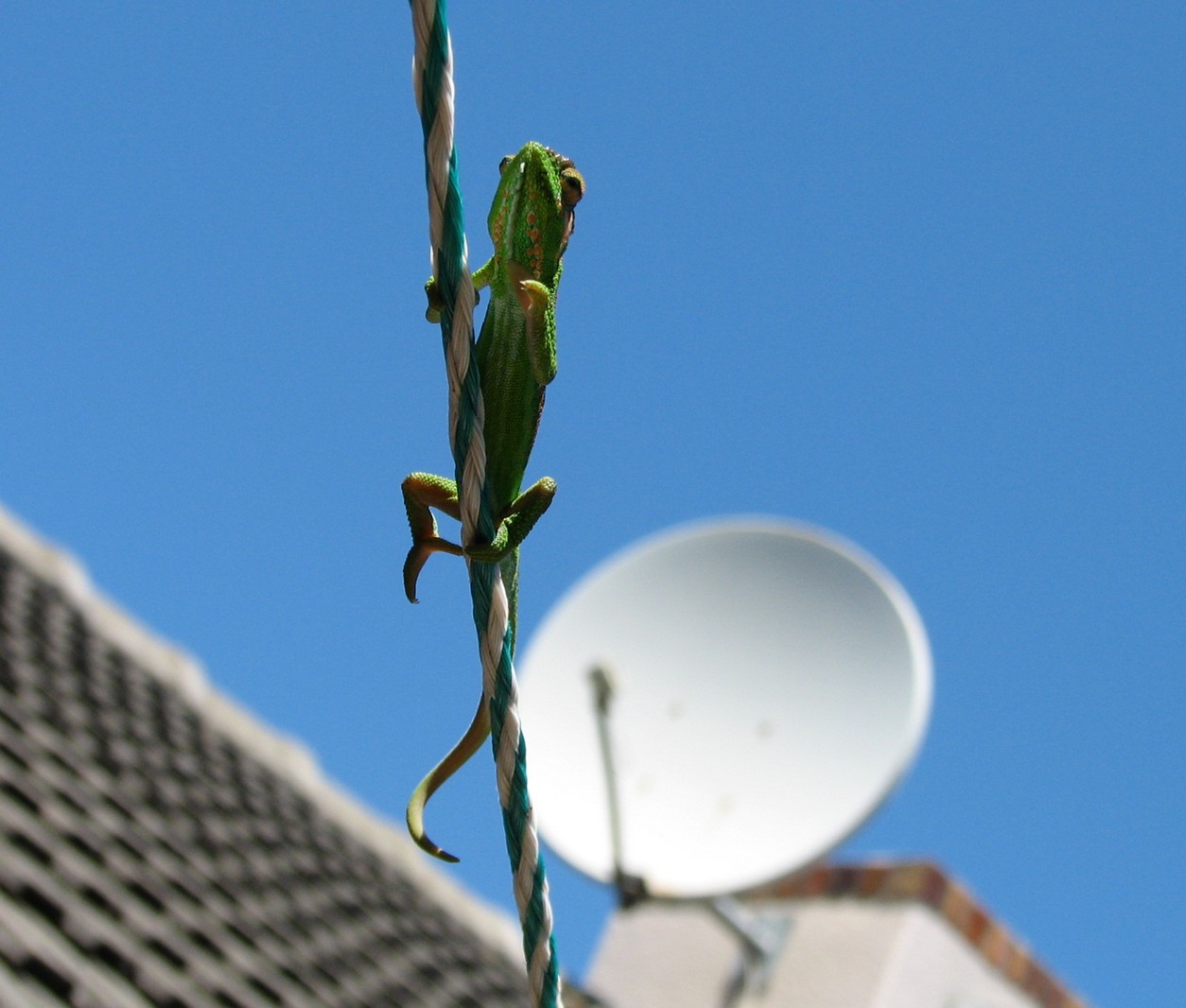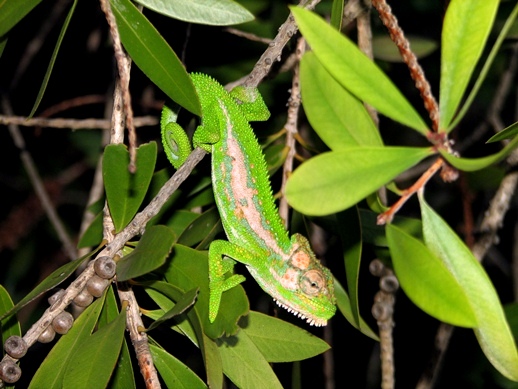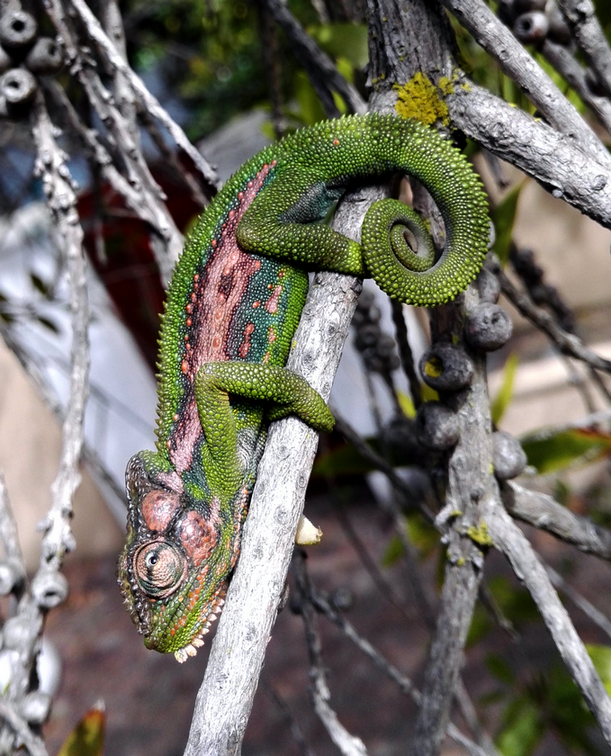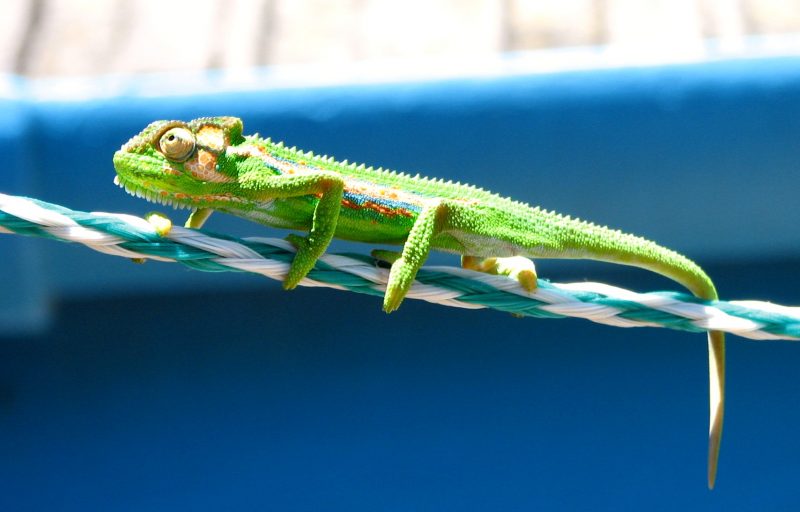Where have all the chameleons gone?
For many years, I could find a Cape Dwarf Chameleon almost on demand in my garden in Rondebosch. If a visitor wanted to see one, it was seldom more than a few minutes search to find one. They had several favourite spots, which was where I looked first. One of these was a bottlebrush bush which was growing a few metres from the kitchen window. Given that the bottlebrush is an alien plant species, it is a unexpected that generations of chameleons would select the sane plant. But obviously, the bottlebrush must had attracted a good supply of insects, as chameleon food. So close-up views of chameleons during breakfast and washing up dishes was part of normal everyday life. This blog attempts to use the data in the ReptileMAP section of the Virtual Museum to describe how Cape Dwarf Chameleons went from common to locally extinct in the garden.
Overall, Cape Dwarf Chameleons have a tiny range, just the southwestern corner of the Western Cape. They are classified as “Near Threatened” by the IUCN.

It seems that my first digital image of a Cape Dwarf Chameleon was an attempt to frustrate audiences. It was taken on 27 August 2006. It was regularly used in PowerPoint presentations, especially as the slide before the title, with the instruction, find the reptile on the screen. Now you need to find it on your screen!

Here is a zoomed in version, in which it is easy to see the chameleon, but you still need to find where this is in the photo above.

It next time I took a digital image of a chameleon was a few months later, on 25 November 2006. It was doing the totally daft thing of doing a tightrope walk along the washing line.



It seems that I took no photos of chameleons from 2006 to 2012, because there are none uploaded to ReptileMAP. There were simply chameleons almost continuously in the garden. At the time, it seemed pointless recording them. The photos that I got were used to illustrate camouflage and to document the tightrope stunt!
A sobering event took place near the end of 2012. My PhD student, Elsa Bussiere, was distracted by a continuous clicking sound that was persisting for hours and hours. Investigating, she found that a chameleon was short-circuiting two of the wires of an electric fence which had recently been erected by a neighbour. The chameleon was dead.

After this, I started uploading the bottlebrush chameleons regularly, until I was doing this every time I saw them. There are five records in 2013. six in 2014, three in 2015, and two in 2016, on 28 September, and on 31 October. And those two records in 2016 were the last two records of Cape Dwarf Chameleon in my garden. This is now more than two years ago, more than double the largest gap in any previous pair of records

It seems likely that the Cape Dwarf Chameleon is now extinct in my garden, and this is probably true of the neighbourhood. The proliferation of electric fences took place at during the period the chameleon disappeared, and this is almost certainly a key factor.
Another factor is getting flattened on roads.

From 2012 onwards, data collection can almost be described as consistent, but it is certainly not good enough for a scientific paper. The weakest part of this account is the lack of solid evidence that Cape Dwarf Chameleons really were common in the garden until about 2012. We do not know what species is next going to be impacted. So the best advice to give citizen scientists is to set themselves the target of “refreshing” the occurrence of even the common species in their patches at regular intervals. Quarterly feels about right, but there are no hard and fast rules as yet.

